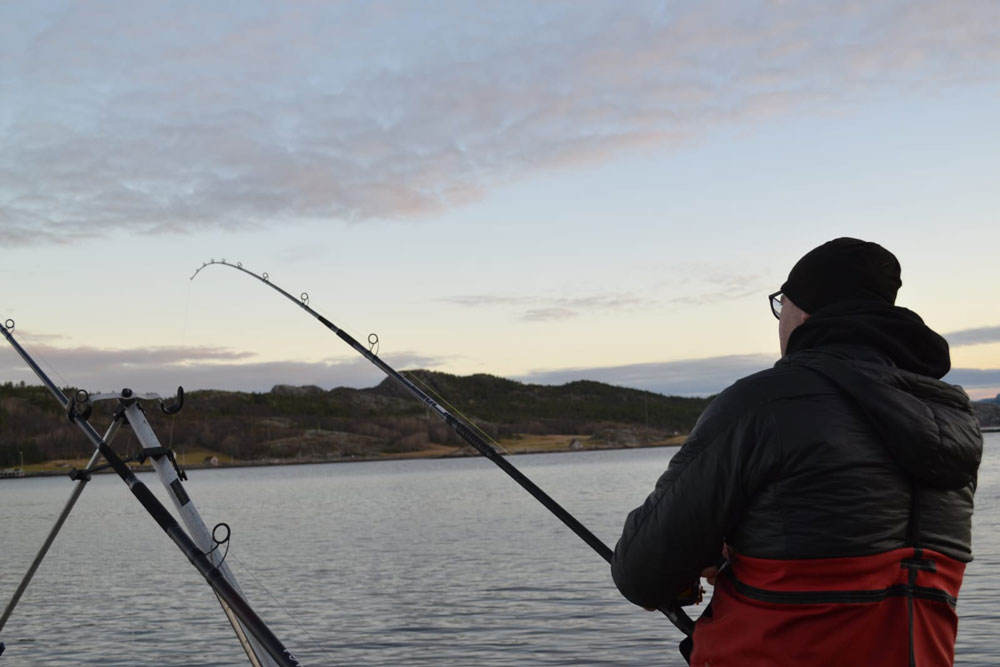If you’re thinking of heading to Norway for the first time, or even if you’re a seasoned Norway angler, this blog is for you: it reveals a range of hot marks that will get you on the fish, with a chance of landing a monster halibut, fabulous flatties, pollock, coalfish, cod and more! In essence, Norway offers a plethora of species in sizes and numbers not seen in the UK. Knowing where to find your target species and the tactics needed to catch them can transform your Norway adventure into the trip of a lifetime.
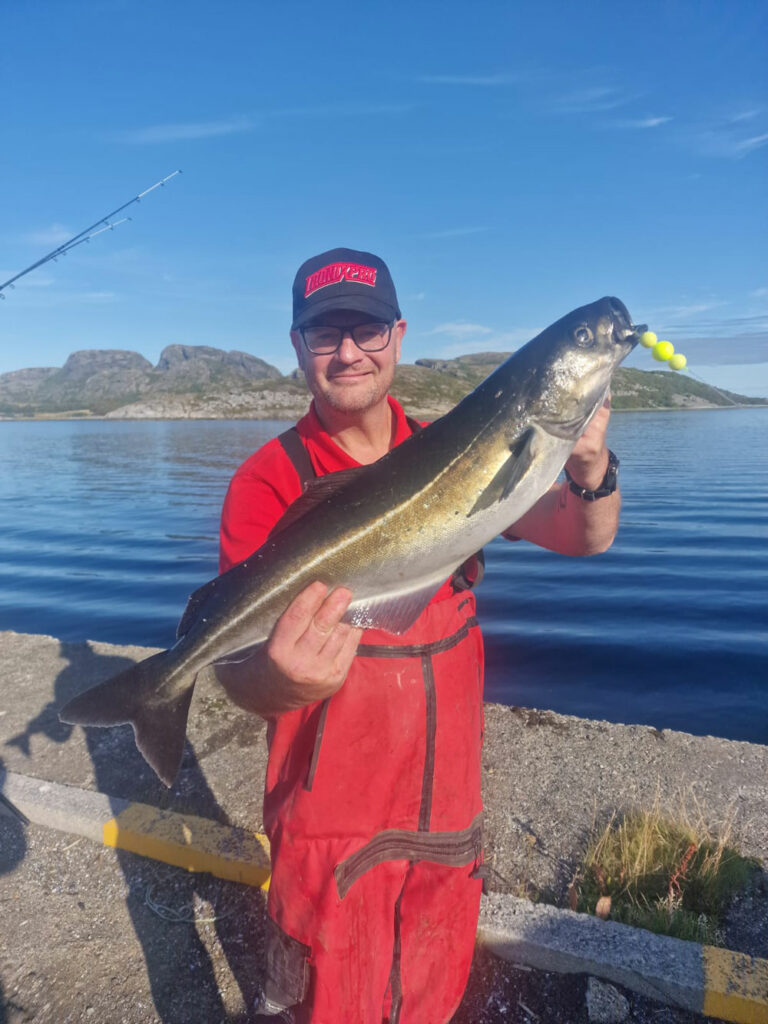
Brand Ambassadors Stuart Jones and Gem Stapleton talk us through the rods, rigs and bait you’ll need for the different species on offer and the marks they recommend fishing to maximise your chances.
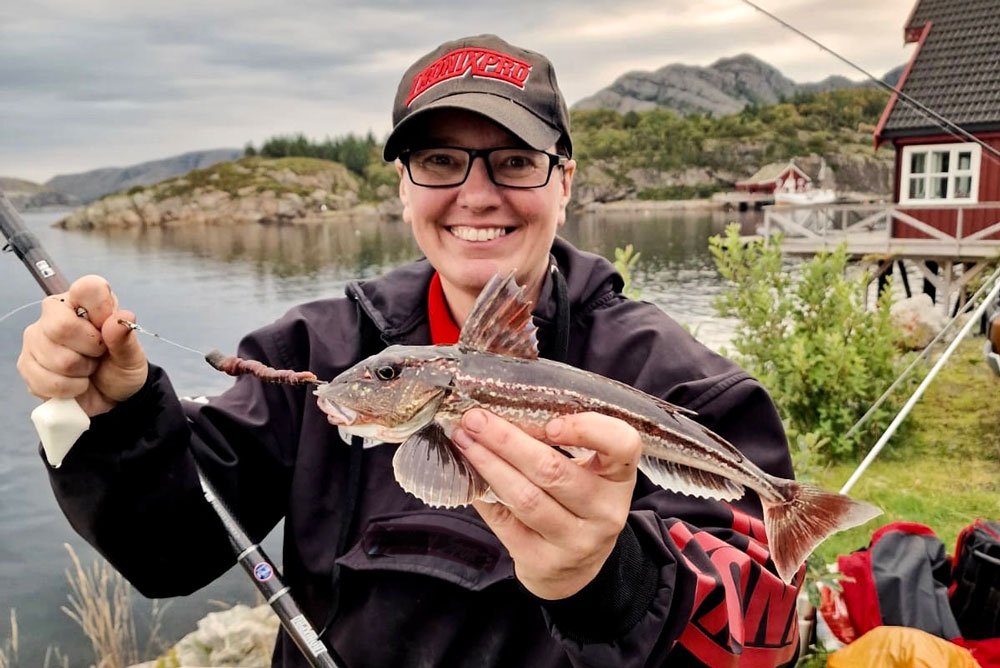
Features of Fish-Holding Marks
The huge variety of species on offer in Norway rightly suggests that a range of different marks are needed to maximise your chances of winning a species hunt. Here, we focus on the ideal characteristics of the marks for a range of species. Specific marks, and the species that you can locate there, are also provided so that you can easily plan your adventure.
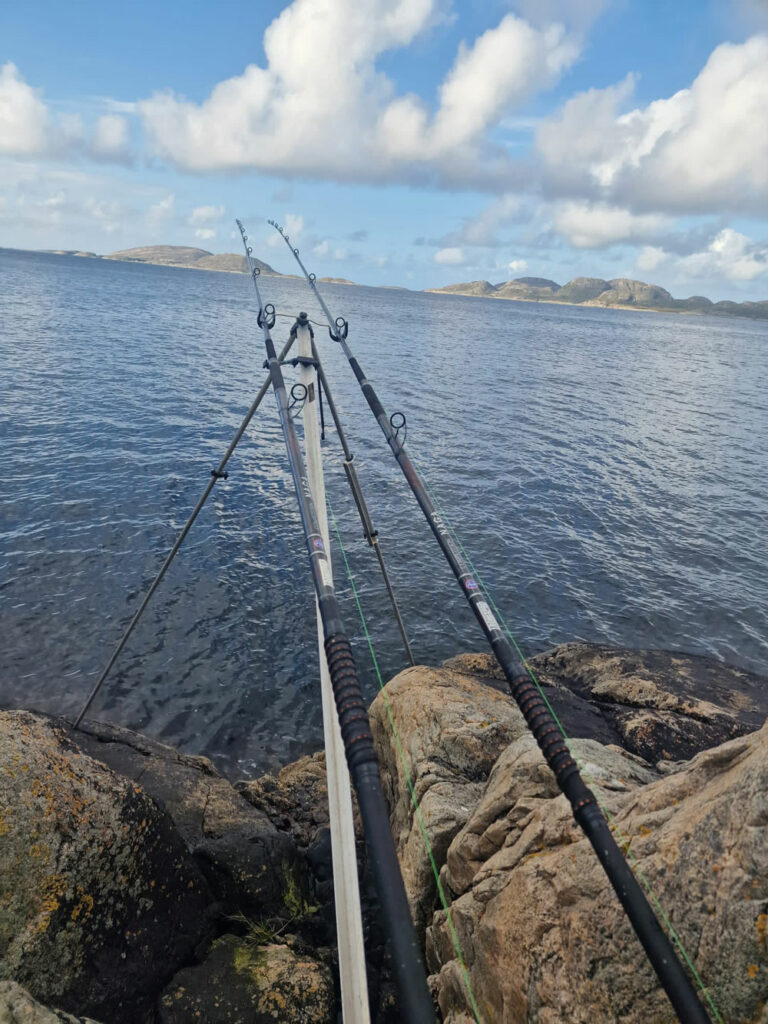
Use and App
Use an app like Navionics to identify possible marks with the characteristics described below in advance of your Norway trip. Combine this with viewing the surrounding landscape on Google Maps to ascertain their accessibility and to determine whether there are suitable parking spots nearby. Some great fishing marks can be potentially dangerous to reach, so always consider your personal ability to access them and your exposure to risk. Remember, rocks can be slippery when wet and what starts as a sunny day in Norway can quickly change with sudden heavy downpours.
Ideal Halibut Marks
The key to seeking halibut – which are avid hunters by nature – is identifying locations that will hold bait fish. Given this, fishing from breakwaters and jetties can provide some superb sport since they afford protection to a lot of smaller prey fish. Halibut tend to inhabit ground that has a sandy or shale bottom. They also like some depth to the water, with 20m-30m being ideal based on our experience. They can be caught in deeper water, for sure, but not in the same numbers.
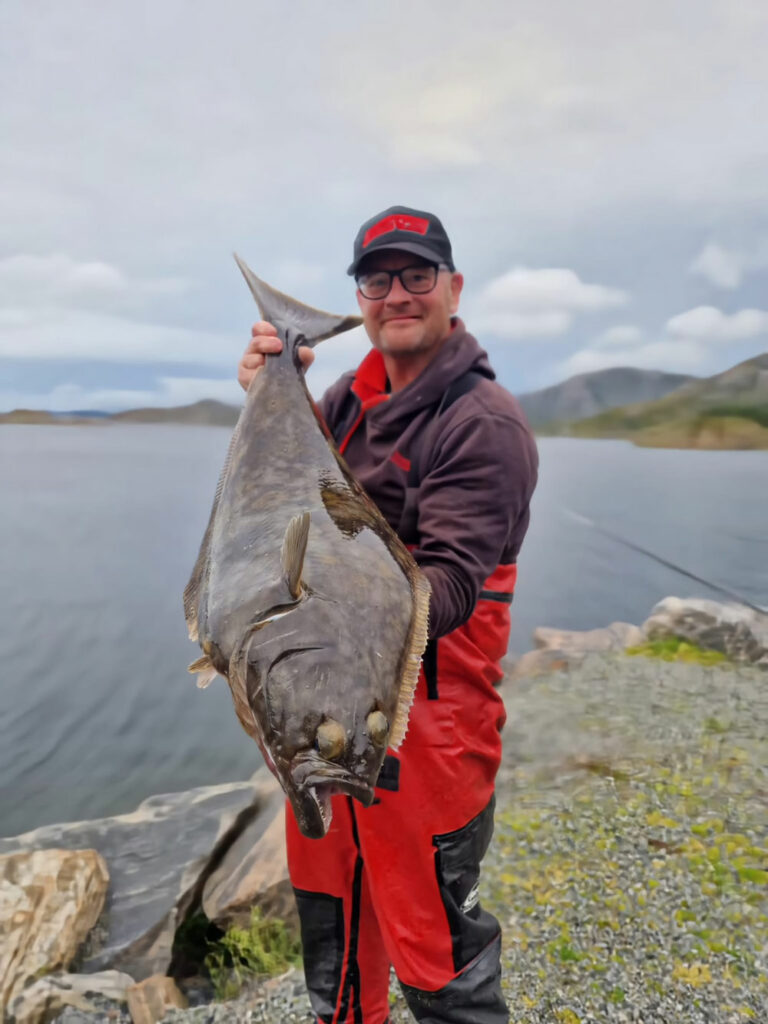
Halibut hotspots might include inconvenient underwater features such as ledges over which you will need to encourage your hooked halibut to swim. Being a flatfish, they try to hold to the bottom, so ledges can pose a real challenge; cod and other species tend to rise over any ledges on the retrieve. Because of this, you should always use a rotten bottom rig, even when there are no obvious snags at your mark. We’ve seen too many fish lost due to a lead snagged on an underwater ledge.
Before you start fishing, make sure that you identify a suitable spot to land any hooked halibut when you arrive at your mark. You’ll almost certainly need a decent sized drop net or a gaff. Tronixpro’s Folding Drop Net is a great option for fitting in your luggage, and the 1.2m gaff would fit perfectly in most rod tubes.
Marks for Smaller Species: Haddock, Cod, and Pollock
Cod and haddock like rough to broken ground, but we have also found them feeding over clean ground. Indeed, the better stamp of haddock have been caught over clean ground when fished in darkness. Herring can, on its day, prove an effective bait for haddock as can worm baits, which also attract cod. The bigger cod, in the 20lb-30lb range, are found in the hours of darkness over rough ground or reef marks. So, both cod and haddock are best targeted at night. In daylight, they tend to be found lurking in deeper water, moving to shallower water when feeding in the dark. These species also like to hunt their prey when the tide is running.
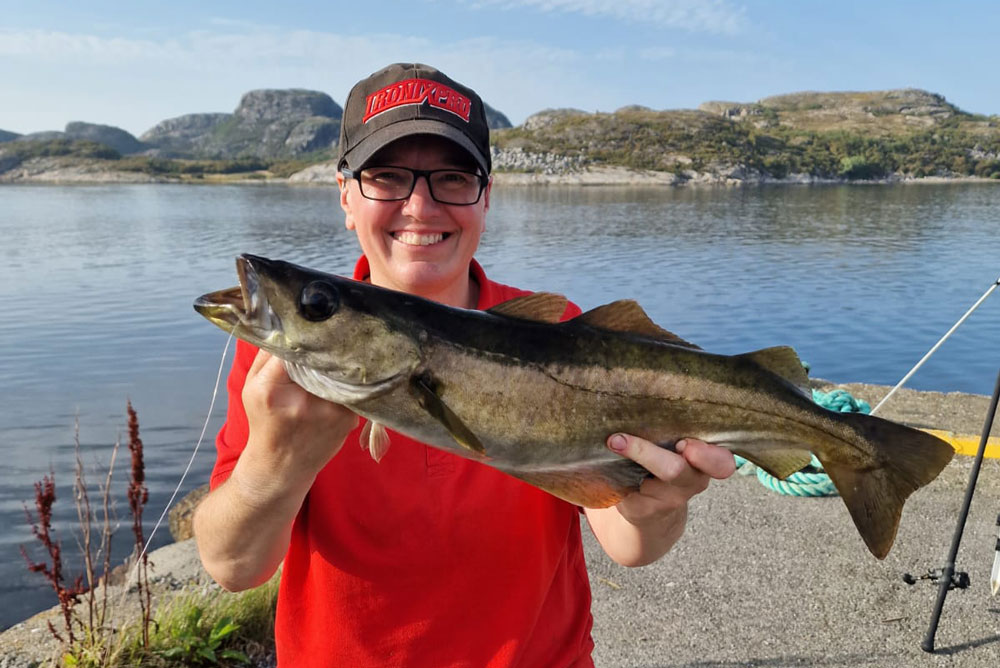
As well as the above, pollock and sometimes cod can be found lurking around piers, jetties, and other close-in structures that hold bait fish. If you are fishing from such a structure, then we recommend throwing spare bait and fish off-cuts over the edge to groundbait the area to attract these predators as well as the smaller fish on which they feed. Using a light rod to catch pollock right down the side can provide some superb action whilst you are waiting for a specimen halibut to run 100 yards with your joey mackerel bait lodged firmly in its mouth.
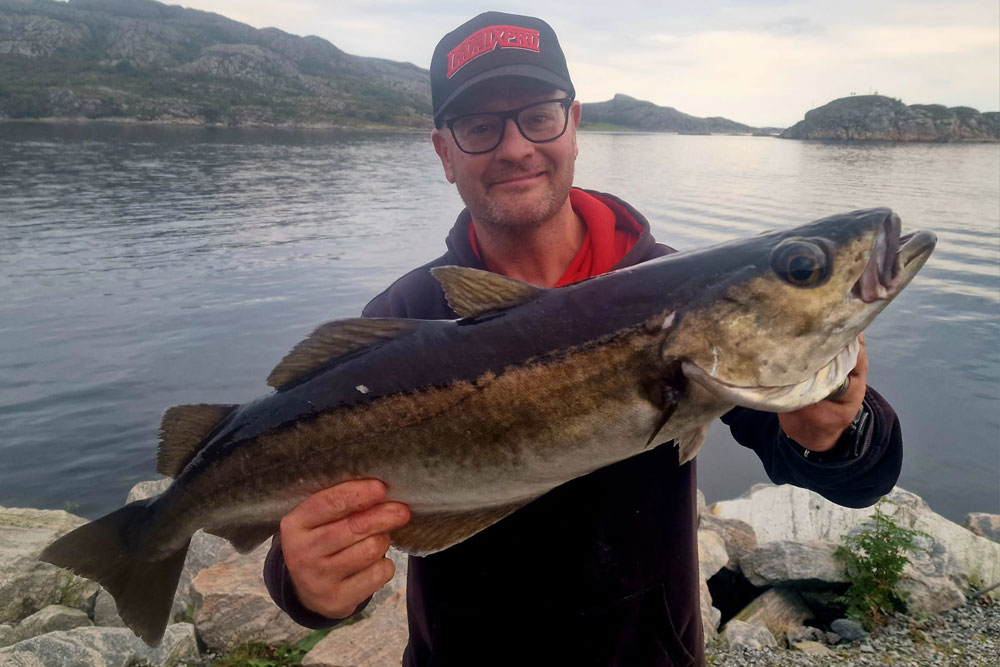
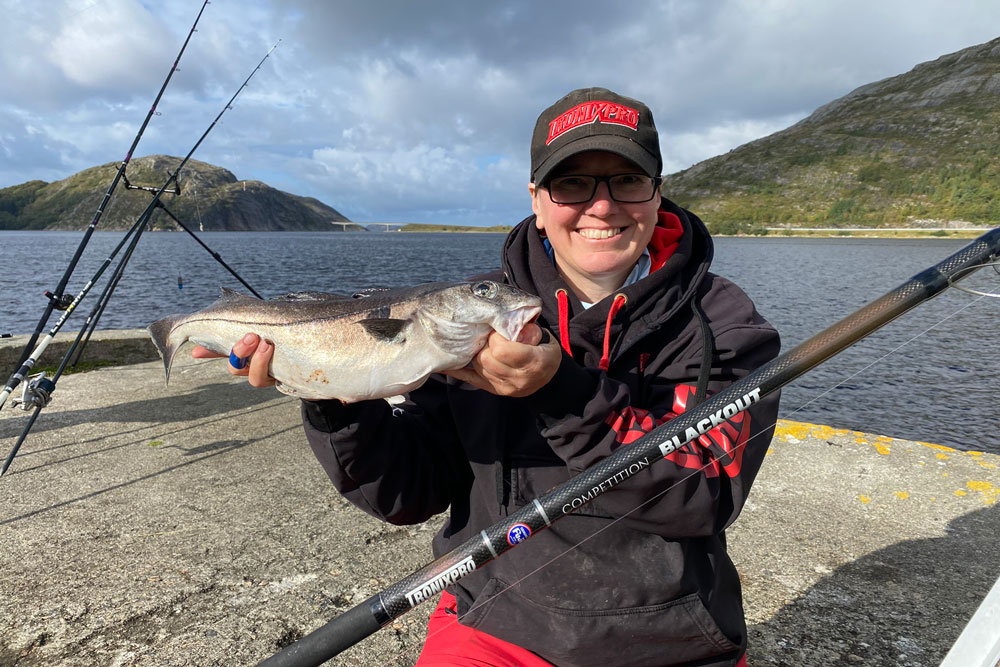
Marks for Flatties
You will find dabs and plaice in marks with smooth, sandy bottoms, just like in the UK. The size of the fish you will encounter, though, is likely to be much larger! Each year some monster plaice and dabs (at least by UK standards) are landed off the Norwegian coastline, with some superb plump specimens finding their way to anglers’ baits.
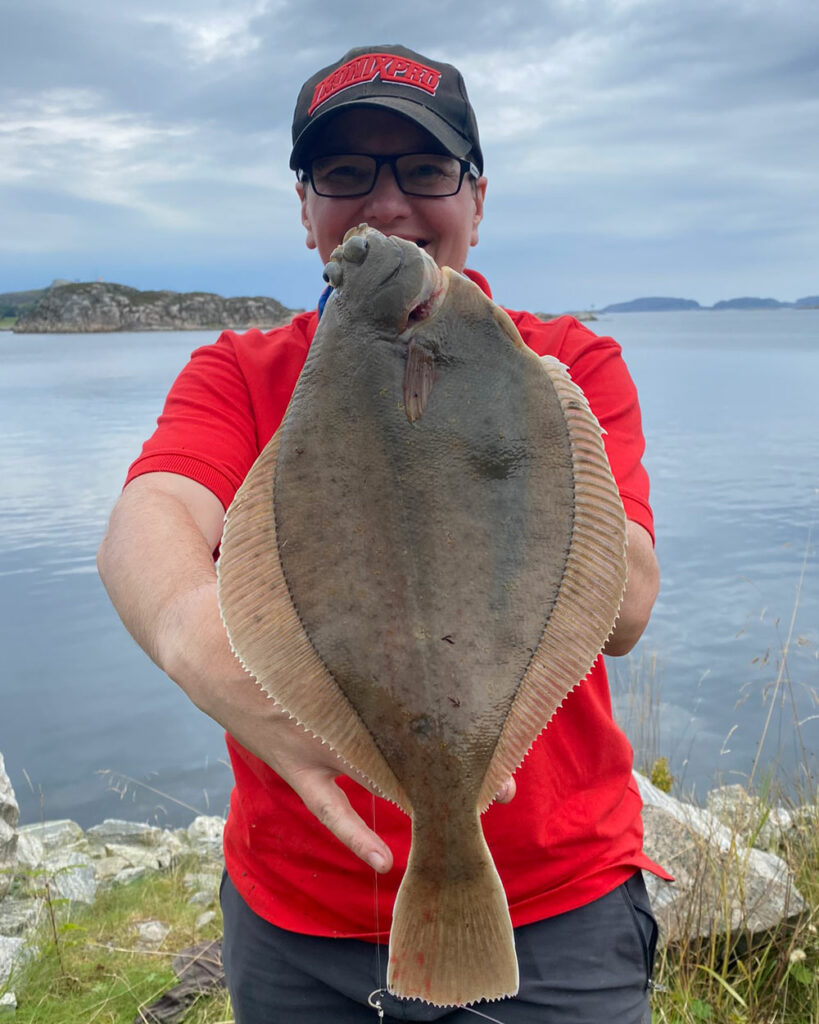
Rods, Reels and Line
The rods and reels required for Norway vary by the species you intend to target. You will need to be able to send the bait 80m plus, depending on the venue so that it sits in the tidal run where halibut and other fish hunt their prey. You’ll be targeting fish that inhabit very deep waters, so even though casting distances need not be massive, you’ll need a lot of main line.
For all of your fishing in Norway, the Tronixpro Blaze 20lb line is perfect, with a low 0.37 diameter enabling plenty to be loaded on to your reel. It has a high knot strength and is resistant to abrasion, which is important for many of the Norwegian marks. Xenon tapered leaders are spot-on, with 26lb-80lb being ideal for the business end. Be prepared to respool your reels whilst in Norway, so always carry extra spools of line.
Halibut: Monsters from the Deep
You’ll need a rod capable of casting 6oz or 7oz plus a large bait such as a whole joey mackerel. If your preference is a two-piece rod, then we both recommend the Tronixpro Competition Naga. This rod is rated to cast up to 225g, and will easily handle the big baits required. A heavier option is the Competition Match GT2, rated up to 250g. Another two-piece rods in the Tronixpro range that is up to the task is the Xenon C-6 which comes in both multiplier and fixed spool versions.
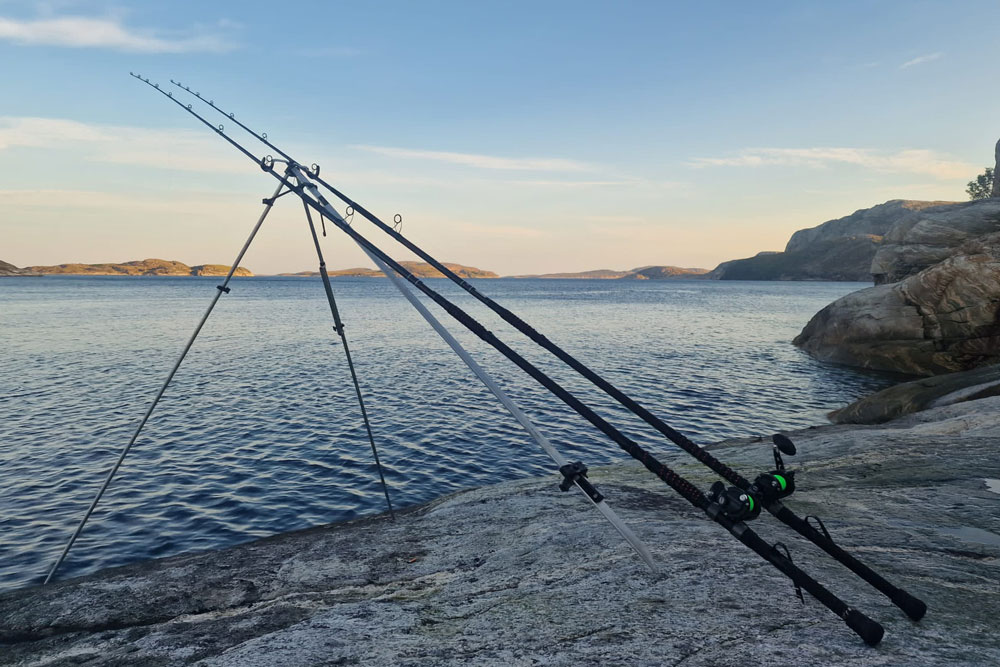
In terms of three-piece rods, the Competition Match TT 4.2m will handle big baits and fish, rated to cast up to 250g. If you prefer a longer rod, then this can help land fish when there is a rocky reef right in front of your fishing spot.
Your chosen reel should have significant cranking power and hold a substantial amount of line. The depth of the water compounded by the long, powerful runs from large halibut justify the need for a large capacity spool.
Smaller Species: Haddock, Cod, Pollock and Flatties
All of the above recommendations will be suitable for fishing for the smaller species. However, more sporting rods include the two-piece glass-tipped Competition Blackout, which is ideally suited to casting 5oz plus worm or smaller fish baits. As a three-piece option, the Competition Match GT is a great choice, or the six-piece Xenon Travel rod is ideal for those who do not want to travel with a large rod tube. In terms of reels, if you want to use something more sporting then the Tronixpro Banzai Tournament Mono Mag will suit or a fixed spool like the 8000-sized Banzai LC-Surf.
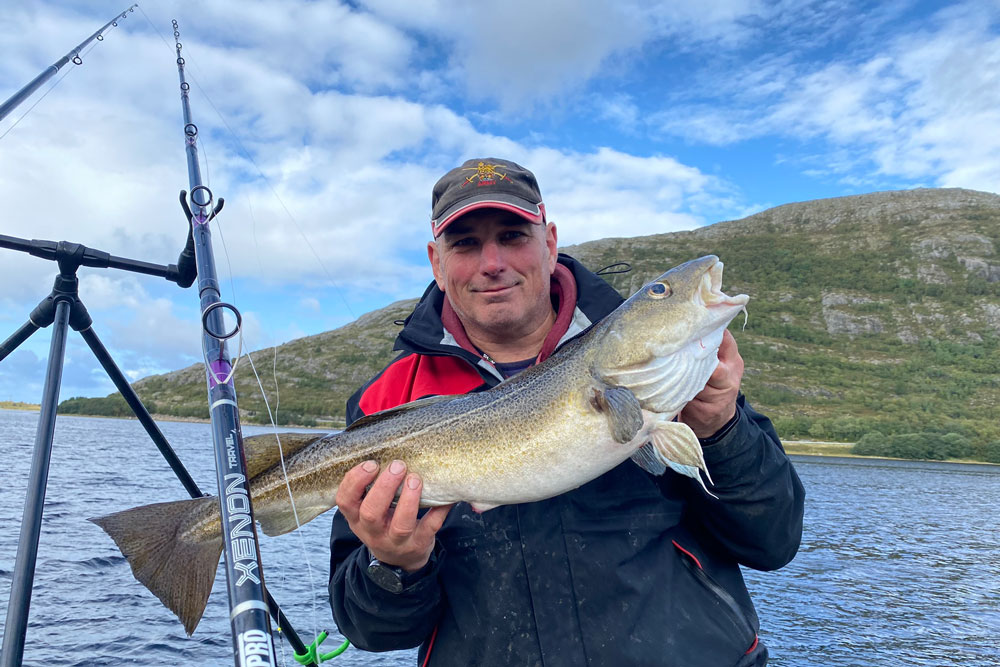
Tactics, Rigs and Bait
It is important to tailor your tactics to the species being targeted and the potential features of the marks you’re fishing.
Important Information: live baiting is illegal in Norway.
Tactics for Halibut
These amazing flatfish typically feed in daylight, but can be caught into darkness. Our killer rig is the rattle rig. Essentially, this is an up-and-over running ledger rig, with a minimum of 5ft snood made from 75lb (or stronger) Xenon Leader. An ideal hook is the extremely strong Big Dog II in a size 6/0 or 8/0. This hook has a large eye, so it is well-suited to using very strong snoods. We suggest not using a pennel set-up in marks with ledges, since any hook not in the fishes mouth could catch on the pesky ledge that is waiting to snag your rig when your halibut hugs close to the seabed as you battle it to the shoreline.
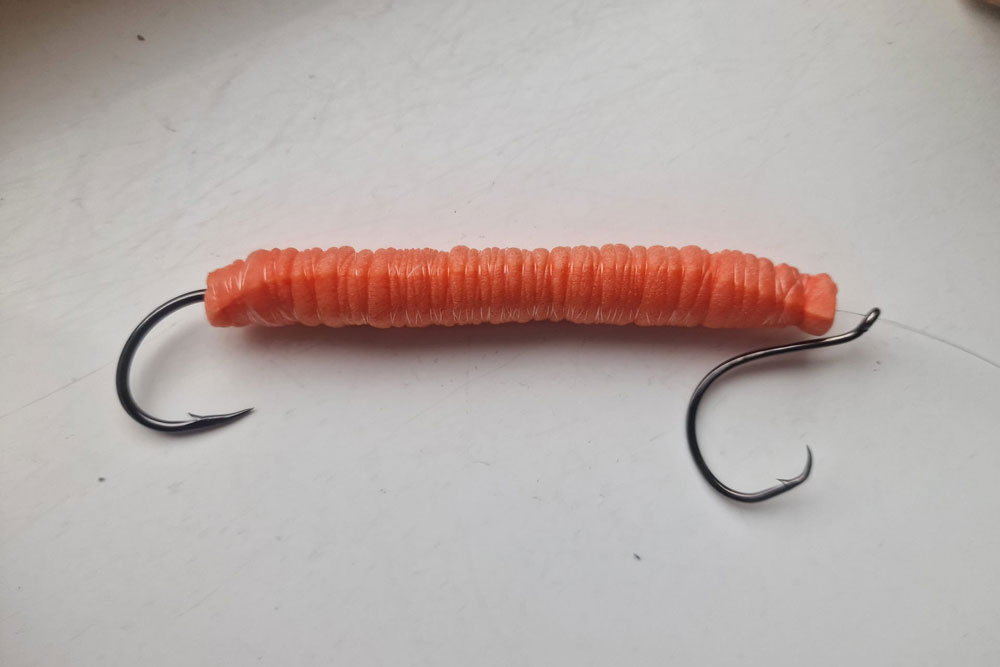
There are two features of the rattle rig that set it apart from a standard up-and-over rig. It has been designed by accounting for how halibut exist and hunt in their natural environment: they hug the bottom, with their eyes facing upwards, preying on fish up in the water column.
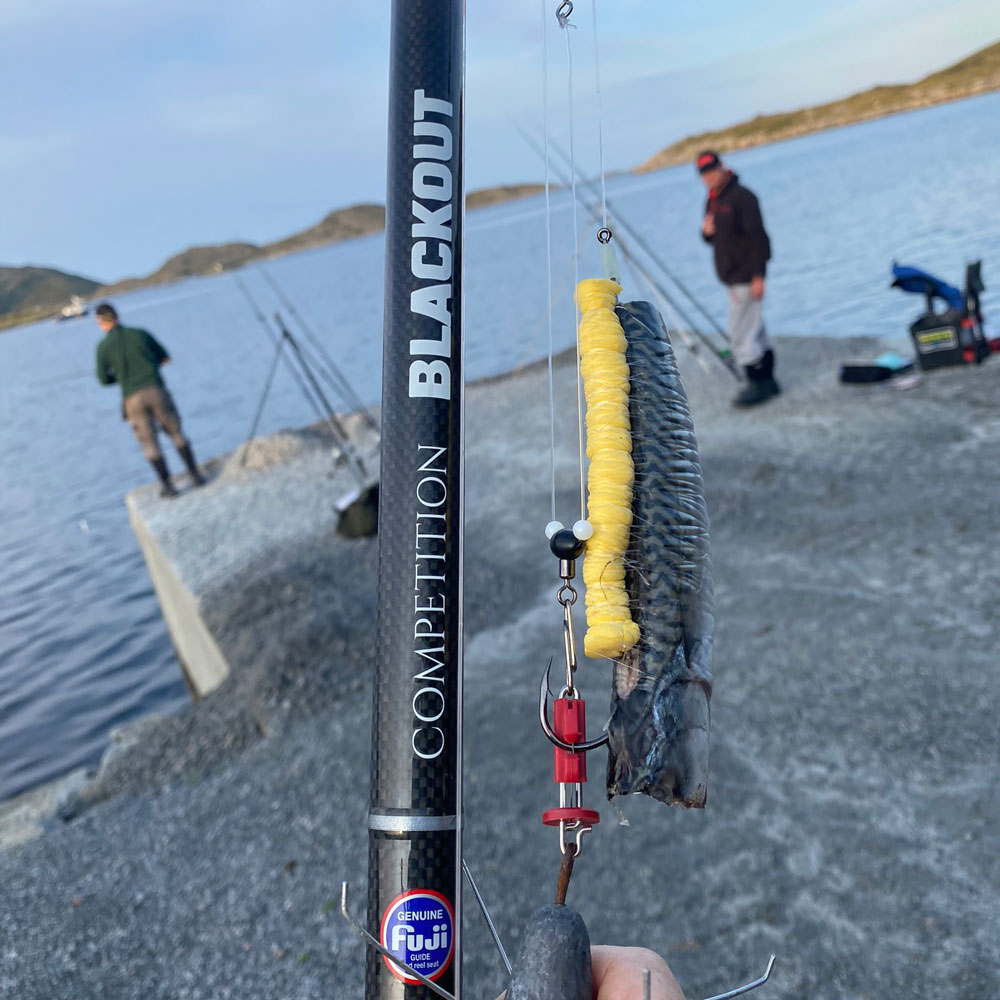
Firstly, the rattle rig has a short length, say 3–4 inches, of pop-up foam whipped on to the snood, engulfing the eye of the hook. When a fish bait is loaded onto the hook, it engulfs the foam which has the effect of popping the bait up off the bottom in a horizontal fashion, mimicking a live fish as it would naturally sit in the water. As a bonus, this placement of the bait higher up in the water renders it much harder for crabs to strip the hook. Secondly, the rattle rig has a small rattle – hence the name – inserted into the foam, such as the HTO Soft Lure Rattle. This audible attractor seems to entice more halibut to take the bait.
Tactics for Smaller Species: Haddock, Cod, and Pollock
Unlike halibut, these fish are more often caught at night, but can also be tempted to take a bait during daylight. For best results in daylight, we recommend locating deeper marks. In the hours of darkness, cod, pollock and haddock can move into shallower waters to hunt their prey.
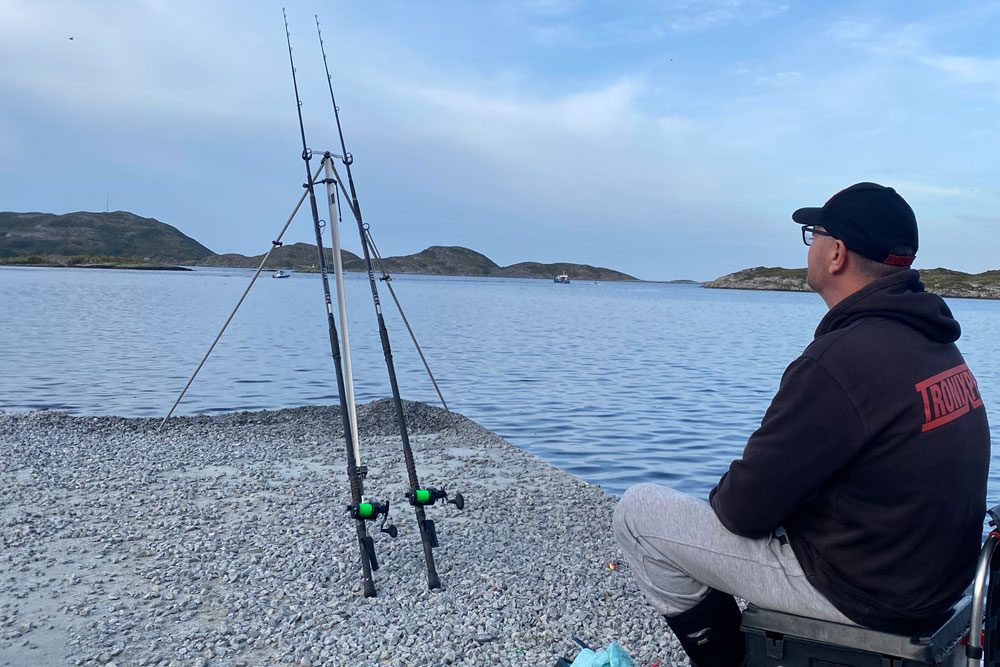
Regardless of the hours you choose to fish, worm baits will produce a high number of cod and haddock, whereas fish baits often pick out the larger specimens. In terms of rigs, we recommend using a 4ft pulley with a rotten bottom when fishing over rough ground. For clean ground, our rig of choice is a 6ft up and over running ledger.
If you want to predominately fish worm baits for the smaller, but more numerous, stamp of fish, then a two-up, one-down rig works well. However, strong snoods are always recommended, with 58lb Blackout Line working well. As a great addition to your rigs, large silicone glow beads threaded on to the snoods will provide enhanced attraction to your baits, such as Tronixpro Glow Balls.
If you’re lucky enough to be fishing on a jetty, you can sometimes find pollock right under your feet. Freelining a king ragworm or small piece of mackerel can produce definite takes with plenty of hook-ups. Persisting with this method can produce some moderately sized pollock in return for your efforts. It's also a super-fun way of fishing, as you can often see your bait being engulfed by a hard-fighting predator.
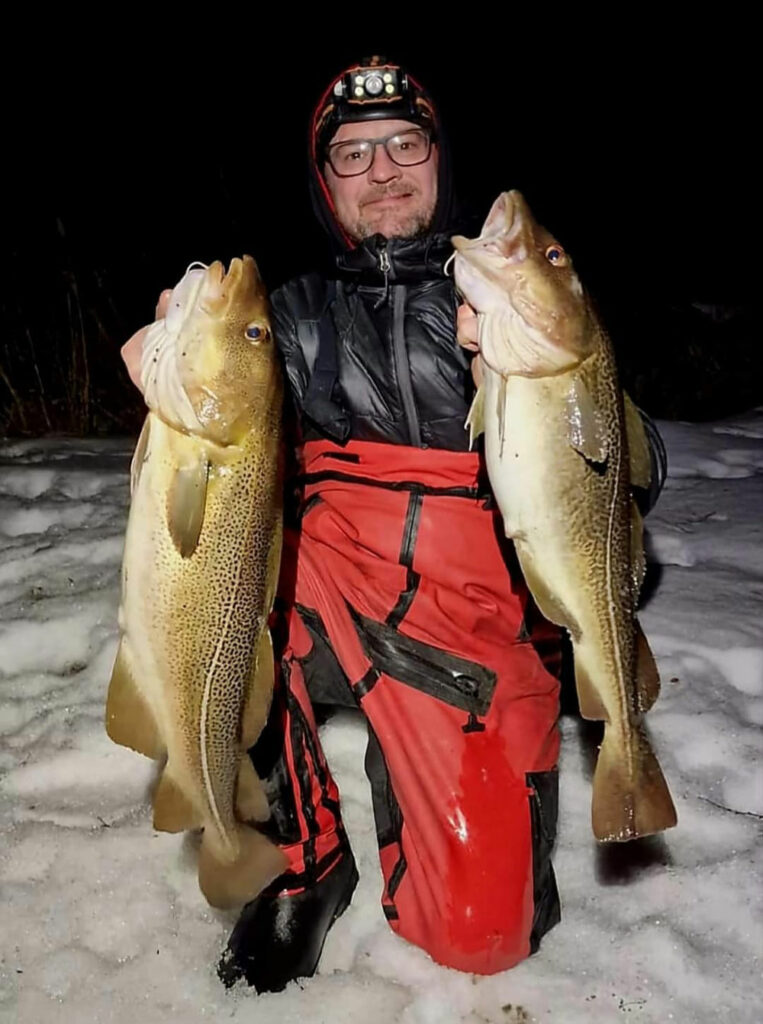
Insider info: if you fish deep water marks at night, you might be plagued by blackmouth dogfish and ghost sharks.
Tactics for Flatties
Fishing for flatties in Norway is much the same as fishing for them in the UK, though you can expect larger specimens to take your baits. We suggest using your go-to flattie rigs, but with larger hooks and stronger snoods. Our preferences include a two-hook loop rig, armed with 1/0 Aberdeen hooks tied to 12-18 inch snoods made from 42lb Blackout. For the rig body, 60lb Xenon Leader is ideal.
A second rig option is an up and over wishbone, also using 1/0 Aberdeen hooks. Bait-wise, worms are deadly. If dabs in particular are your quarry, then loading your hooks with prawns will bring the best results most days.
Summary
The key to a successful fishing holiday to Norway is preparation and arriving with a solid plan of action. This includes identifying marks, making sure you’ve the right rigs for your target species, and knowing the best tactics to employ. Hopefully, this blog provides a starting point for those heading off on their first visit or those seeking to increase their hook-up rate from previous trips.
